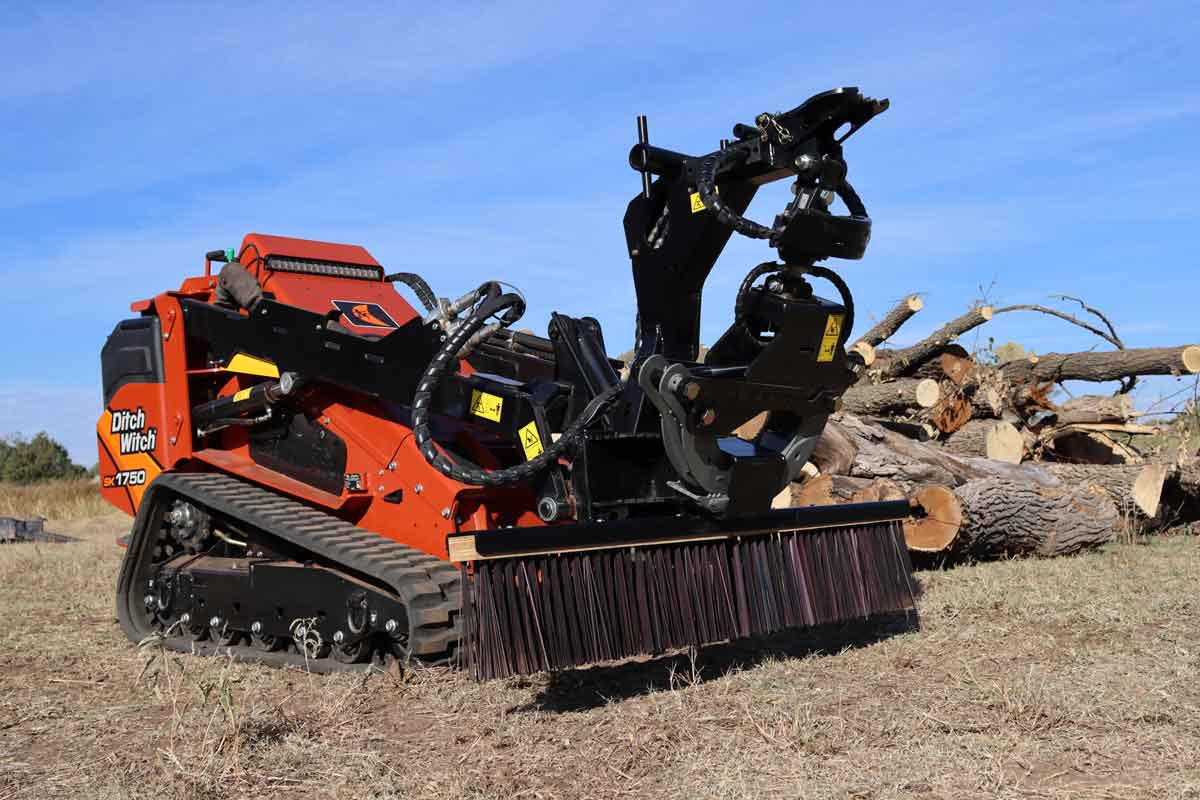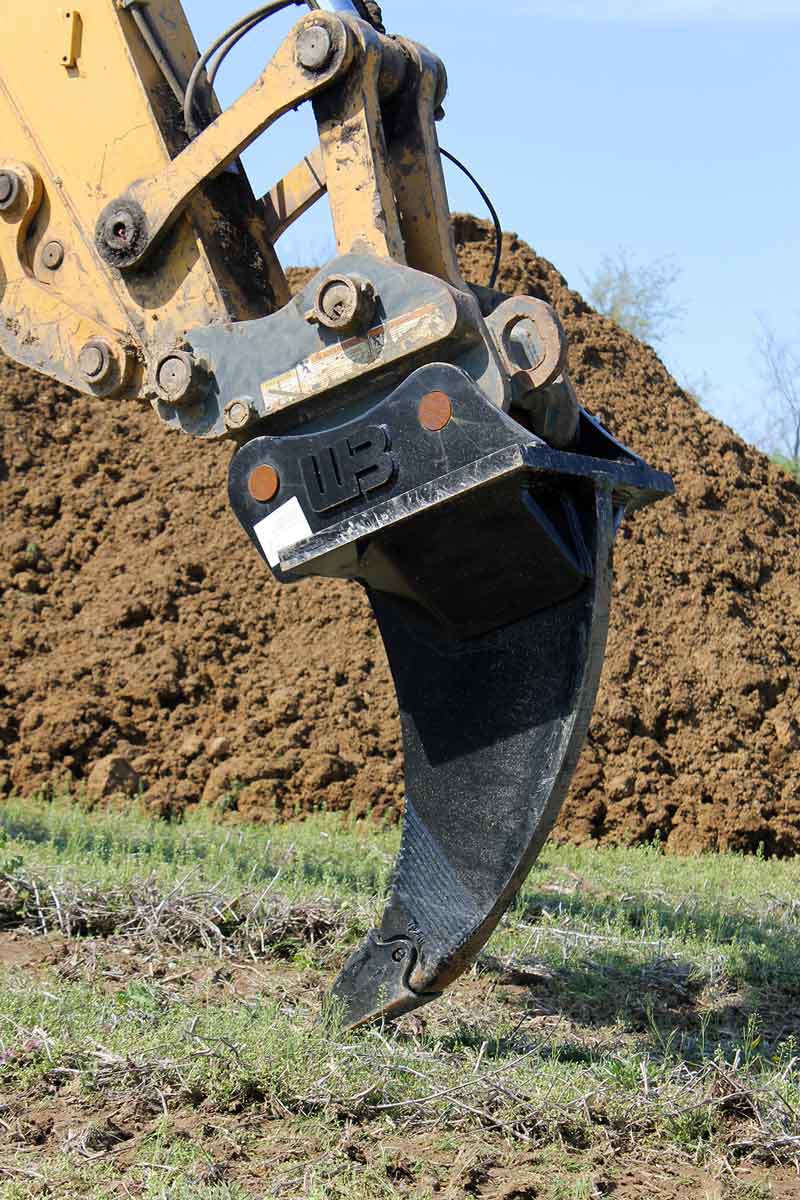Loftness’ Clint Major Discusses Mulching Attachments for Mini Excavators

Mini excavators offer versatility with their long arms, making them suitable for various tasks from digging to placing heavy materials. They also excel in mowing and brush cutting, with attachments like rotary mowers, drum mulchers, flail mowers and saws. Each attachment has unique benefits for different tasks, affecting efficiency and cost. Choosing the right attachment is often based on material and desired cut, but there are many factors as you’ll see in our Q&A below. Rotary cutters, with heavy-duty blades, are good for clearing large areas of brush, while flail mowers, which use spinning blades, provide finer mulch and less flying debris. Drum mulchers, equipped with fixed teeth, handle thicker trees and produce fine mulch.
Ultimately, the right mower or mulcher attachment can significantly enhance a mini excavator’s productivity, making it a powerful tool for various landscaping and construction tasks. We learned all about this when we interviewed Clint Major, product development coordinator for Loftness. Enjoy our conversation below.
CE: First off, thanks for taking the time to chat with us. To start, could you briefly summarize your mower attachments for compact excavators? For example, how many models do you currently have, what is your series called and why should someone buy your product?
Loftness offers two products in this category for compact excavators: the 20 Series and 30 Series Battle Ax. These mulching attachments are ideal for a variety of vegetation management jobs, including mowing down tall grass and mulching brush and small trees. Loftness products are designed to blend performance with durability. Our customers chose Loftness because they know our products just flat out work all day.
Awesome. If you had to pick one big differentiator in your brush cutting/flail mower attachment product offerings, what would it be? A one-of-kind tooth configuration? A cool, unique hydraulic design? Easy maintenance? Pick something and briefly explain it.
The Loftness Battle Ax features a two-stage cutting chamber which processes the material twice per rotation. This leaves the material with a finer finish in a single pass and reduces the need to pass back over mulched material if a fine finish is desired. The second shear bar also acts as a deflector which sends the material down towards the ground rather than out horizontally. This reduces flying debris, which other manufacturers typically address with a door that can be closed to block flying debris if desired.
What are the major options for flail mower attachments for mini excavators? Size, power, teeth, drives, brands? What major decisions should buyers be concerned about when picking an excavator flail mower?
Attachments like the Battle Ax have multiple tooth options. Sharpened knives are the most aggressive and higher performing option, but they require regular sharpening. Four-point beaver teeth offer less slicing performance than knives, but they have four points to help pick up material from the ground. The last option is carbide teeth, which are the least aggressive but most durable option. Carbide teeth are most ideal when operating close to the ground in rocky terrain. Being able to work with all teeth options is where the Battle Ax rotor design excels. Many competitive attachments suffer productivity loss when using less-aggressive teeth.

Other options include spade hooks and hydraulic thumbs, which are useful for positioning material when mulching. Additionally, there are a variety of mounting styles for excavators, including blank mounts, pin-on mounts and pin grabber mounts.
Another highly recommended option for an attachment like the Battle Ax is a tilt hitch. A tilt hitch allows the operator to hydraulically tilt the attachment to the left or right. This can really increase productivity through better positioning of the attachment for the job at hand.
How much hydraulic power is needed to run a typical excavator flail mower? Both gpm and psi?
The 20 Series Battle Ax is designed for excavators ranging from 10,000 to 20,000 lbs. They require 15 to 35.9 gpm hydraulic flow, up to 4,100 psi and 20 to 70 hydraulic horsepower. The 30 Series Battle Ax is for 18,000- to 36,000-lb excavators. It requires 20 to 60 gpm hydraulic flow ranges, up to 6,000 psi and 45 to 150 hydraulic horsepower. A case drain is required on the 30 Series and recommended for the 20 Series. The hydraulic motor is adjustable and needs to be tuned to match the flow range of the excavator it is mounted to.
What advice would you give to a contractor looking to buy or rent a flail mower?
For maximum performance, it’s important to ensure that the attachment is properly suited for the excavator. That includes making sure the weight and hydraulic capabilities of the excavator can properly handle and power the attachment. Also, make sure you buy or rent from a knowledgeable dealer/rental house. There are many variables that need to be considered when choosing the right machine for the job. Renting is a great way to test the capabilities of a specific machine and make sure it is the right fit.
What operational advice is imperative when using a flail mower attachment?

When using this equipment, one of the most important pieces of advice is to understand the excavator’s hydraulic capabilities and stay within that range. As the load increases, the pressure goes up, and the rotor will slow or even stall when the maximum relief pressure is reached. When this happens, performance is decreased and heat is generated, which could potentially cause damage to the hydraulic system. To reduce the amount of pressure and maximize productivity, operators should refrain from engaging material too quickly. If equipped with a tilt hitch, the mulcher can be used much more effectively to mulch straight down on vertical tree trunks by tilting the mulcher such that the tree trunk makes direct contact with the mulcher teeth very close to the first sheer bar. This eliminates the wobbling/whipping of the tree trunk that makes it difficult to maintain consistent contact and efficient mulching of the tree.
It’s also important to understand the risk of flying debris. The tilt hitch on the Loftness Battle Ax greatly improves the operator’s ability to control debris.
What safety precautions are imperative when using either a brush cutter or flail mower attachment on a mini excavator? What safety equipment is recommended?
First of all, operators must read the owner’s manual and understand all safety precautions before attempting to run the equipment. However, some of the most important safety instructions include using impact-resistant shielding on the power unit to protect the operator. Do not allow any people or animals within 300 ft of the machine and attachment during operation. Also, before exiting the excavator, operators must ensure the equipment has been properly shut down and that they’re wearing the appropriate protective gear.
Great info, Clint. We really appreciate you taking the time to talk to compactequip.com. Anything else you’d like to mention?
With this type of equipment, customer support goes a long way. A good dealer and manufacturer will help set you up for success, keep you running, and make sure you have a good experience throughout the lifespan of the product.
Keith Gribbins is publisher of Compact Equipment.




